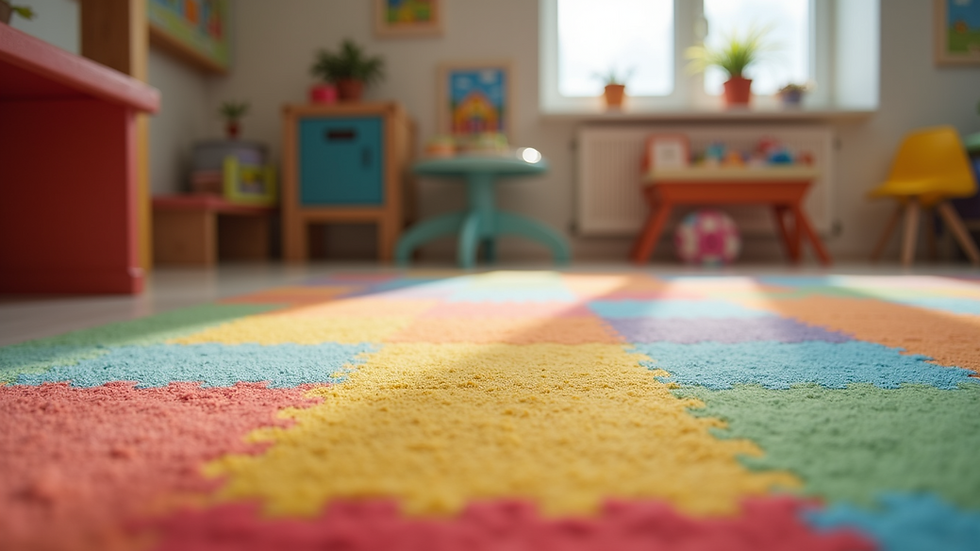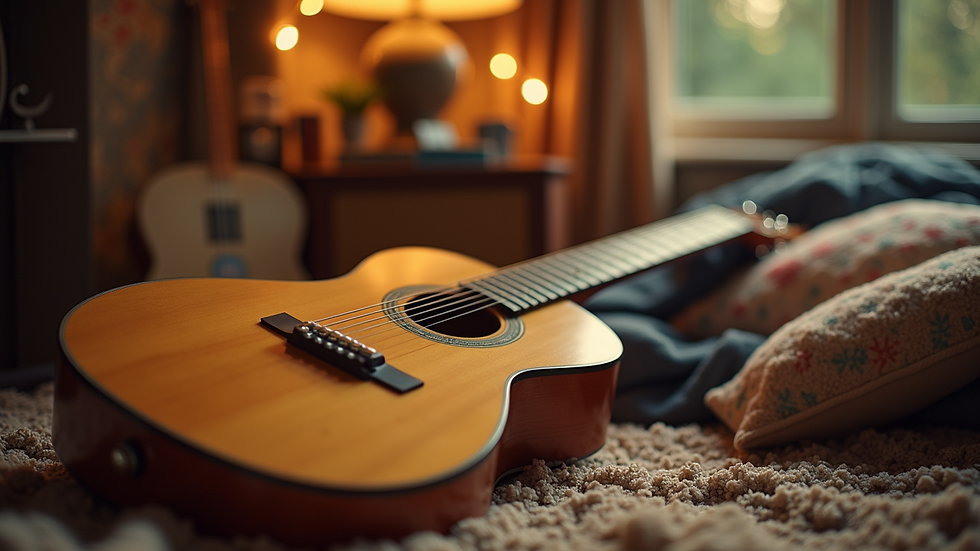How to Instil Rhythm in Your Child Through Your Guitar Playing
- Maisie Loh
- Sep 11, 2025
- 4 min read
Introducing your child to music can be a truly rewarding experience for both of you. The guitar, with its rich tones, is an excellent choice for this musical journey. When your child dances to your guitar playing, they not only develop an inner sense of rhythm but also boost their creativity, confidence, and coordination. This post will provide practical ways to teach your child how to dance to the rhythms produced by your guitar playing. With fun activities and engaging methods, you can help your child connect with music and movement in exciting ways.

Understanding the Basics of Rhythm
Before diving into teaching dance movements, it is crucial to lay a solid foundation in rhythm. This foundational knowledge will help your child feel the music, not just hear it.
Start Simple: Begin by strumming simple, repetitive chords on your guitar. A good starting chord could be G major, played repeatedly for a few minutes. Encourage your child to listen closely to the beats, clapping along or stepping in time to the music. For example, you might play G major for four beats, then switch to C major for four beats—this will make it easier for them to find a comfortable rhythm.
Clapping and Tapping: Encourage your child to clap or tap their foot along with your strumming. This interactive approach reinforces timing and allows your child to engage physically with the music. You can chant simple beats like “1-2-3-4” as you play, which helps them catch the rhythm more effectively. Did you know that studies show kids who participate in rhythmic activities develop better timing skills?
Creating a Dance Space
A designated dance area encourages your child to express themselves freely.
Set Up a Play Area: Find a spacious area in your home that is free of obstacles. Ideally, use a soft surface like a carpet or mats to create a safe dancing environment. Aim for at least 4 feet of space, so your child can move without restrictions.
Add Visuals: Bring in colorful rugs or floor patterns. These visual elements create a lively atmosphere and inspire your child's creativity. For example, you could use a bright circular rug as a dance "stage" to make it more exciting for them.
Incorporating Movement
With a basic understanding of rhythm and a proper space, it’s time to introduce specific dance movements.
Fun Dance Moves: Show your child some simple movements. Swing your arms while playing G major, stomp your feet to C major, or sway your hips during transitions. Clearly demonstrating how each movement aligns with specific strums can help create a visual connection between music and dance.
Involve Imagination: Encourage your child to invent their own dance moves based on what they hear. You might say, “Pretend you’re a bird flying during the music!” This kind of imaginative play adds an entire layer of engagement and creativity to the dance process.
Using Songs with Varying Tempos
To help your child get used to different rhythms, mix in songs with varying tempos.
Speed Variation: Play a ballad like "Wonderwall" followed by a fast-paced song such as "Tears for Fears." Guide your child to adjust their dance styles for each tempo change. Kids learn best through practice; according to a 2020 study, children who engage with various tempos develop a broader sense of rhythm and improved motor skills.
Engagement through Repetition: Play favorite songs repeatedly over a few sessions. Repetition boosts familiarity and helps your child feel more confident in their movements, deepening their emotional connection to the music.
Playing Along
Once your child feels comfortable moving to your rhythms, let them take the lead.
Interactive Play: Ask your child to suggest movements while you play the guitar. This collaborative approach empowers them to express their creativity and takes ownership of the musical experience. Games like this promote good teamwork and increase their motivation to engage in music.
Encouraging Expression: Celebrate their creativity! Whether they spin, jump, or do a silly dance, every movement showcases their growing sense of rhythm. The idea is to foster a supportive environment where experimentation is welcomed.
Incorporating Games
Integrating games into your music and dance sessions can spark interest while reinforcing rhythm skills.
Follow the Leader: Strum a simple tune while your child mimics your movements. This playful activity aids in timing and coordination. It can strengthen your bond, as you both share moments of laughter and enjoyment.
Rhythm Freeze: Play music and let your child dance freely. When you pause the guitar, they must freeze in place. This game is not only fun but also helps reinforce their connection to rhythm and improve their self-control.
Gradually Expanding Their Skills
As your child grows more attuned to rhythm, introduce them to more complex musical concepts.
Exploring Genres: Introduce different musical styles to your child, like classical or jazz. Listening to a range of genres broadens their understanding of rhythm and encourages them to adapt their movements for each style. Research shows that children exposed to diverse music styles become more versatile in their rhythmic abilities.
Encouraging Musicality: Enrolling your child in dance or music classes can complement the skills learned through your guitar playing. Connecting with peers in structured settings enhances social interactions and opens new learning avenues, making every session a stepping stone in their musical journey.
Final Thoughts
Teaching your child to dance to your guitar playing is an enriching adventure that nurtures a love for music and movement. By following these methods, you not only cultivate rhythmic skills but also foster creativity and self-expression. Value each moment together as your child uncovers the joys of music.
Remember, every child learns at their own pace. Patience and encouragement are essential. The key is to enjoy the journey and celebrate even the smallest progress. In time, you will witness your child grooving to the rhythms of life, all inspired by the melodies you created together.








I always associate a Rotax engine for sale with peace of mind. They’re engineered to last and to deliver consistent performance under a wide range of conditions. For both training and private flying, that kind of dependability is invaluable, making these engines a top choice.
India is famous for dairy farming, being the world's largest milk producer for decades, with a vast cattle population and deep-rooted cultural importance. Other prominent dairy farming countries include the United States, China, Germany, and France, known for their high production volumes and significant contributions to the global dairy market.
Also read: https://birchwoodfarmdairy.com/